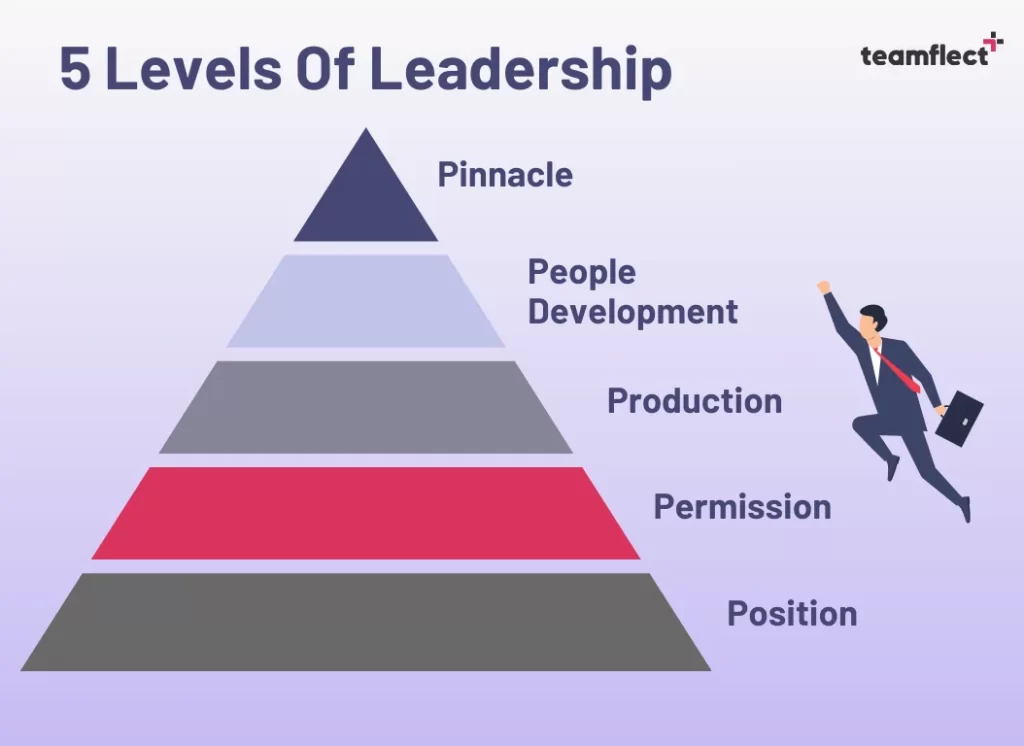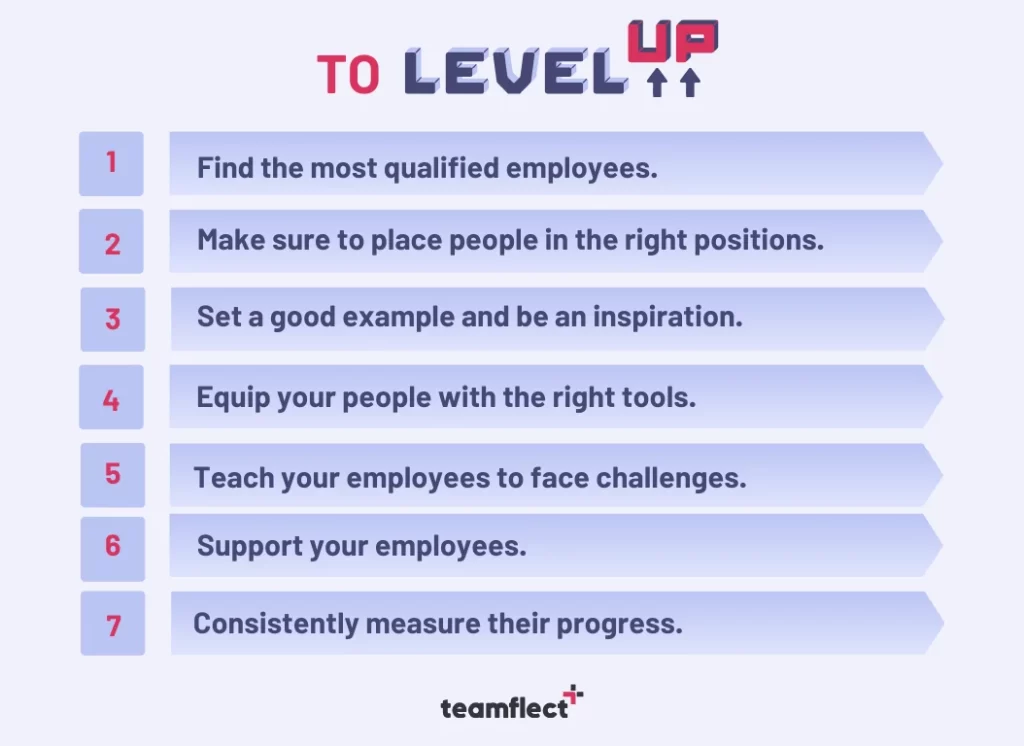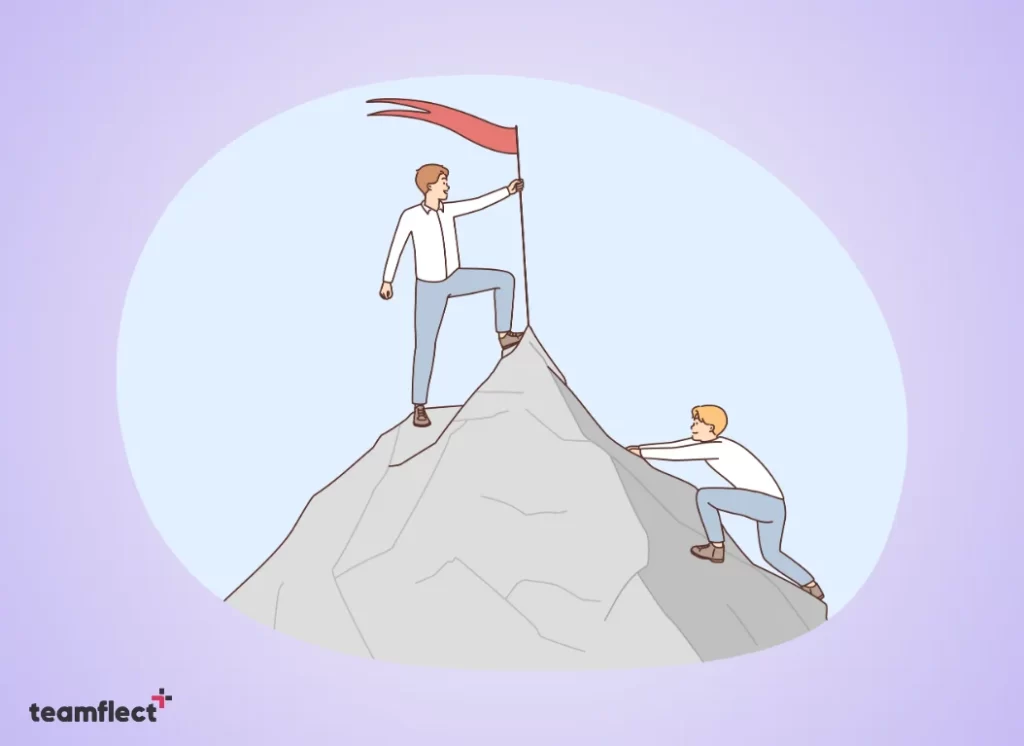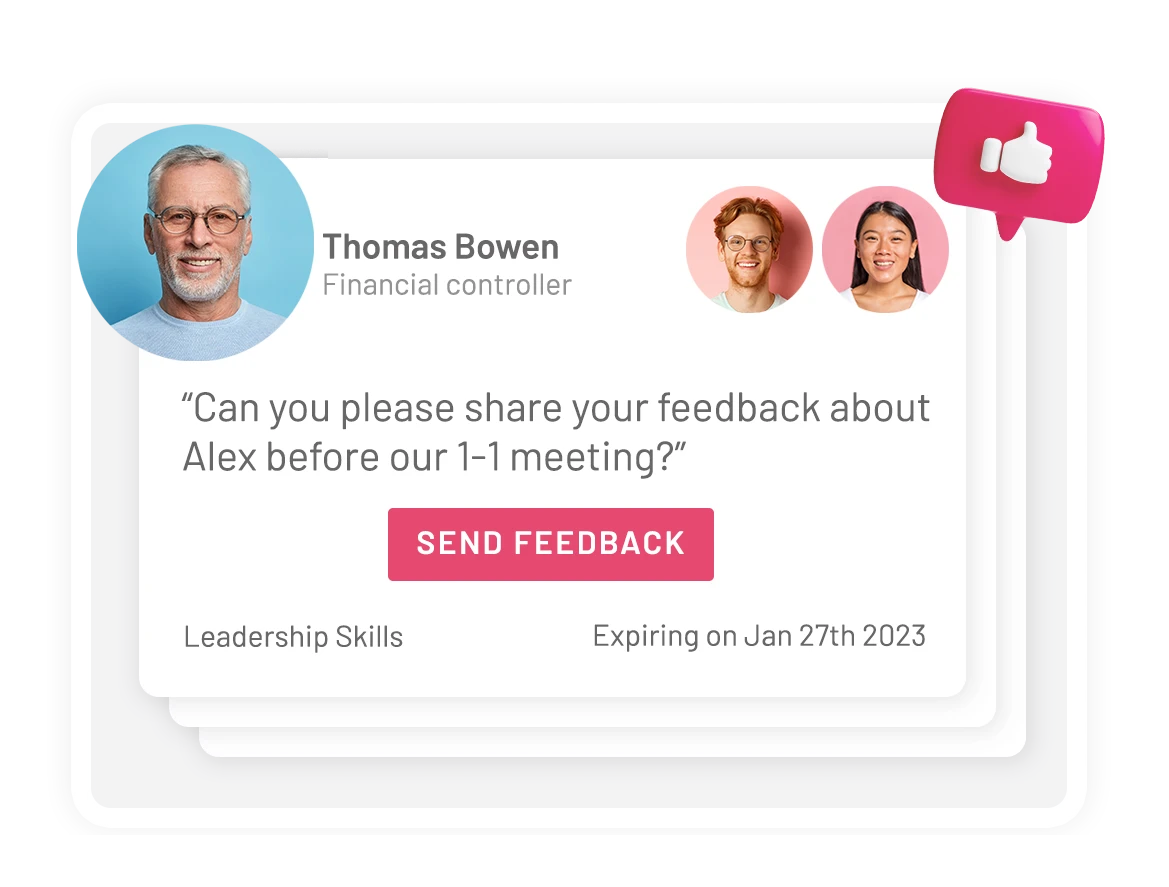Leadership is a process, not a position.
John Maxwell
As internationally acclaimed author, expert, and speaker John C. Maxwell once put it, true leadership transcends job titles or positions.
This statement clearly demonstrates that leadership is a long journey and not just a position.
To help you navigate through this long journey, John Maxwell explains why it’s so critical to invest in your employees’ growth, build relationships that last, and be an inspiration for them in his book 5 Levels of Leadership.
If you aspire to be a powerful leader, read on and discover how you can build your legacy by picking up the right leadership practices.
Table of Contents
8 Critical Insights Into the 5 Levels of Leadership

1. To move up within the 5 Levels of Leadership hierarchy, you should build upon the previous level.
2. Climbing the 5 levels of leadership ladder is a gradual process. In other words, ascension is slow and demands time and commitment.
3. While ascension is a slow process, descension might occur rapidly if you are not careful.
4. As you climb up the 5 Levels of Leadership ladder, you will experience greater satisfaction from reaching new heights.
5. To progress, you need to continuously improve your personal and professional skills because the 5 levels of leadership demand further development.
6. When you stagnate at a certain level, it might impede personal as well as organizational growth.
7. You usually move to different leadership levels when you change your position or your organization.
8. You need other people to climb the 5 Levels of Leadership. In other words, moving up involves the support from others and it’s not a solitary process.
What Are the 5 Levels of Leadership?
1. Position

You need to start from somewhere to build a solid foundation and create your legacy. The position is the entry level of leadership and according to John Maxwell it can simply be described as:
Positional leadership is based on the rights granted by the position and title. Nothing is wrong with
John Maxwell
having a leadership position. Everything is wrong with using position to get people to follow. Position is a poor substitute for influence.
Positional leaders don’t influence people, which is a prerequisite for being a leader. The leaders of Level 1 have direct reports and they only rely on their positional power to control their employees.
As a result of relying heavily on rules, policies, and regulations, their direct reports will not choose to go above and beyond in their roles.
This level doesn’t require special leadership skills since anyone can be appointed to a positional level in the hierarchy of leadership.
Best Practices to Level Up
- Instead of relying on your position to lead your employees, you should use your skills to inspire them.
- Don’t be entitled.
- Go to your employees to find out what they want and need.
Attitudes That Help a Leader Move Up
You need to change how you perceive leadership if you want to move up within the 5 Levels of Leadership hierarchy. According to John Maxwell if you internalize these statements, you can increase your chances of leveling up from Level 1 to Level 2:
- Don’t rely on your title.
- The most important asset to leaders is their people.
- You don’t have to have all the answers.
- Great leaders include their employees.
2. Permission

At this level, you have established relationships and earned the trust of your people. Your employees follow you because they want to.
To influence your employees, you need to value them and treat them with respect.
Leaders at this level are concerned about keeping their position, but this concern stems from how to establish meaningful relationships with their employees.
As a consequence of this concern, employees develop an interest in getting to know their leaders as well.
You may be tempted to stop at this level, however, leadership is not all about building relationships.
Best Practices to Level Up
- To build relationships that last, you need to connect with yourself first and develop self-awareness.
- Adopt a people-oriented leadership style and be genuinely interested in your people.
- Treat people as how you want to be treated.
- Using motivating language will go a long way in creating a positive work environment and building relationships.
- Balance care and candor since they can help you ensure authenticity and constructive communication in your interactions with employees.
Attitudes That Help a Leader Move Up
To rank higher in the 5 levels of leadership framework, John Maxwell suggests adopting the following attitudes:
- You should aim more than building relationships if you want to move up within the 5 Levels of Leadership framework.
- As you work toward building relationships at work, you need to make sure there is mutual growth. In other words, you should grow together by establishing a shared understanding and connection.
- You should realize that sometimes you need to take risks to achieve a broader goal even if this risk involves potential strain on a work relationship.
3. Production

Creating a pleasant work environment is not enough to build a leadership legacy. You need to produce results and get things done to be a great leader.
Production-level leaders aim to deliver results and achieve goals. As a result of delivering goals, momentum kicks in, profits skyrocket and turnover goes down.
According to John Maxwell, at this level, leaders become change agents by facing thorny issues, tackling difficult problems, and taking their people to another level of effectiveness.
Best Practices to Level Up
- Recognize your talents that can help you make a difference and contribute to the vision of your company. Understand where your strengths lie.
- Communicate your vision clearly so you can improve team productivity.
- You also need to recognize the talents within your employees to build a cohesive and collaborative team.
- Prioritize the tasks that can help you deliver significant results since task prioritization is essential to improve productivity.
- Embrace change since progress often requires openness to change.
- Keep in mind that you should ultimately aim achieving goals.
Attitudes That Help a Leader Move Up
Few things in life are better than seeing people reach their potential.
John Maxwell
- To move up within the 5 levels of leadership hierarchy, strive to touch people’s lives through higher levels of achievement.
- Recognize that your people are your most valuable asset. Therefore, you need to value and continuously challenge them to contribute to their development.
- Invest in your people and cultivate leaders to strengthen your organization.
4. People Development

At this level, leaders try to use their position, relationships, and productivity to develop their followers until they become leaders.
The result of people development is reproduction. In other words, a Level 4 leader reproduces him/herself.
According to Maxwell, two things occur at this level. The first one is a high level of collaboration and teamwork as being invested in people deepens work relationships and strengthens loyalty.
The second one is the boost in performance since more leaders in a team means better results.
Best Practices To Level Up

- Recruiting: Find the most qualified employees during the recruiting process.
- Positioning: Make sure that you place people in the right positions through effective positioning.
- Modeling: Set a good example and be an inspiration for your people.
- Equipping: Help your people by equipping them with the required tools and skills.
- Developing: Teach your employees to face challenges successfully by investing in their development.
- Empowering: Support your employees and create an environment that produces success.
- Measuring: Consistently measure the progress of your potential leaders to maximize their impact.
Attitudes That Help a Leader Move Up
Only leaders can develop other people to become leaders…Nobody really understands leadership
John Maxwell
until he or she does it.
- The main goal of being a great leader should be to reproduce other leaders.
- To build leaders, you need to establish a culture that celebrates leadership qualities and this includes creating an environment where Pinnacle Level leaders coach and reward employees with leadership qualities.
- Dedicate your life to reproducing new leaders which should be more than just a job commitment for you.
5. Pinnacle

Among the 5 Levels of Leadership, this one is the most difficult to achieve. Therefore, it is not achieved by many leaders.
Pinnacle level leadership requires a lot of effort, talent, skill and most importantly, it requires devotion.
Developing your followers is more difficult than simply leading them.
Developing leaders to the point where they are able and willing to develop other leaders is the most difficult leadership task of all.
John Maxwell
If you are at the Pinnacle-level of leadership, you will create unique opportunities that others can’t and you will build your empire.
At this level, you will have a positive reputation and acquire a great deal of respect.
Best Practices At the Pinnacle Level
- You should be willing to let others surpass your skills and ability and make room for them at the top.
- When you see potential in your people, mentor them continuously to become leaders.
- Choose people around you wisely and keep honest people who can ground you.
- Approach task management in a way that a Pinnacle Level leader would do.
- Strategically plan your succession.
- Build a positive legacy by making decisions that contribute to being remembered.
How To Help Others Move up to Levels 4 and 5
- To help your people move up, you need to recognize fundamental lessons of leadership that are key to success. Moreover, ensure your employees can internalize these lessons to improve their leadership skills.
- You should seek moments that you can teach something to your employees each day by looking for everyday situations that can be learning opportunities.
- Keep in mind that challenges present teachable moments. You can use your challenges as your guide for teaching.
- You should create an actionable guideline by using the challenging experiences you’ve had.
- Influence your employees by introducing them to different people.
- You should recognize that your main responsibility is to create new leaders.
Best Tools To Achieve Pinnacle Level
Leveraging Consistent Feedback
To improve productivity, you need to regularly receive and give feedback. Feedback will create encouragement and belonging in your employees which will help you build a growth-oriented environment.
Giving feedback means that you have high expectations from your employees which contributes to empowering and motivating them.
To empower and motivate your employees even more, you need to use feedback software.
As the most user-friendly feedback software within Microsoft Teams, Teamflect allows you to exchange 360-degree feedback and more!
If you are already using Microsoft Teams, Outlook, or other Microsoft Office tools, then your search for new feedback software ends right here!



